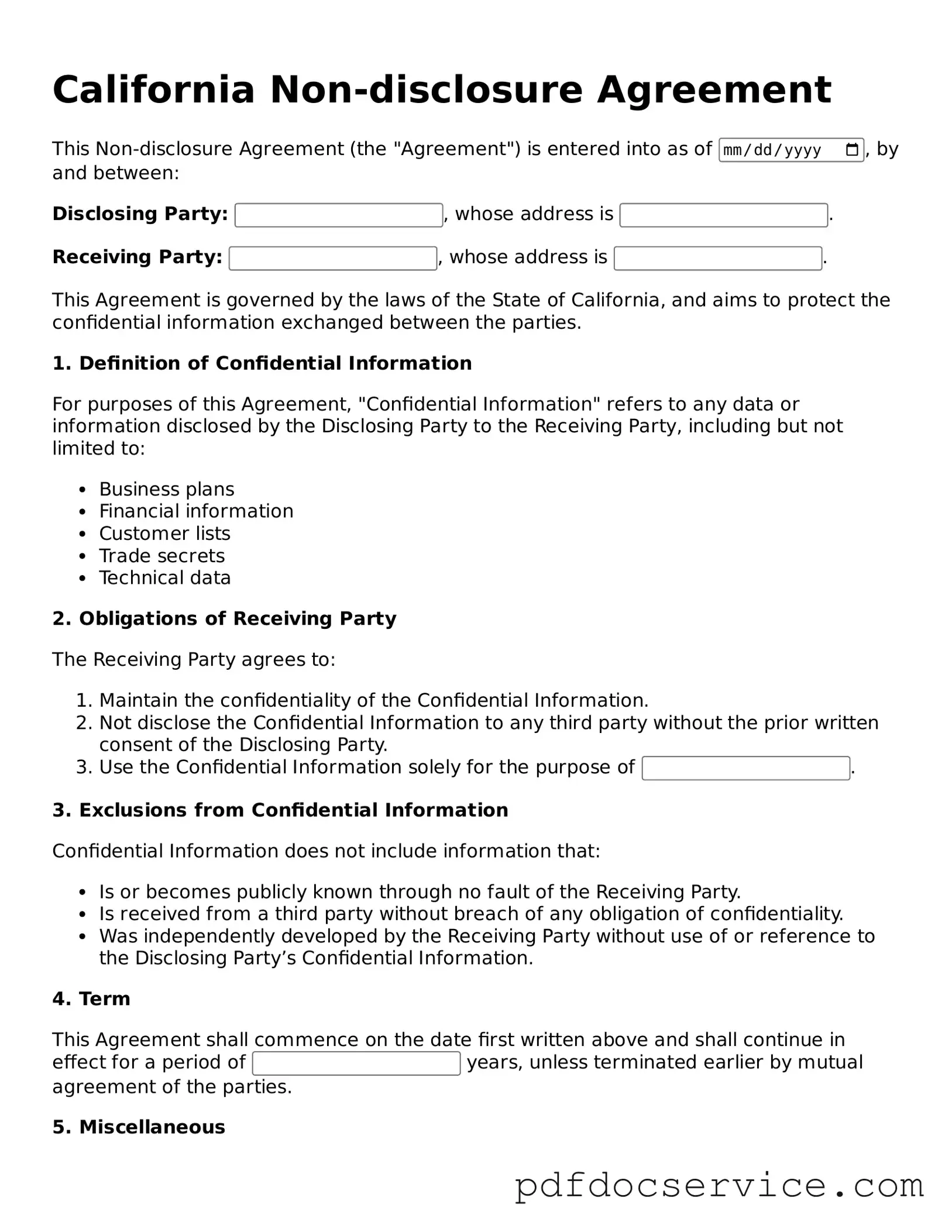What is a California Non-disclosure Agreement?
A California Non-disclosure Agreement (NDA) is a legal contract designed to protect sensitive information shared between parties. This agreement ensures that confidential information remains private and is not disclosed to unauthorized individuals or entities.
When should I use a Non-disclosure Agreement?
You should consider using an NDA when sharing sensitive information with another party, such as during business negotiations, partnerships, or collaborations. It is particularly important when discussing proprietary information, trade secrets, or any data that could harm your business if disclosed.
Who can be involved in a Non-disclosure Agreement?
Typically, two parties are involved in an NDA: the disclosing party and the receiving party. The disclosing party shares confidential information, while the receiving party agrees to keep that information private. Both individuals and businesses can enter into an NDA.
The NDA can protect various types of information, including:
-
Business plans
-
Financial data
-
Marketing strategies
-
Customer lists
-
Trade secrets
Essentially, any information that is not public knowledge and could provide a competitive advantage may be covered.
How long does a Non-disclosure Agreement last?
The duration of confidentiality can vary based on the terms agreed upon in the NDA. It may last for a specific period, such as two or five years, or it may remain in effect indefinitely, depending on the nature of the information and the agreement's provisions.
What happens if someone breaches the NDA?
If a party breaches the NDA, the disclosing party may seek legal remedies. This can include monetary damages, injunctions to prevent further disclosure, or other legal actions to enforce the terms of the agreement. The specific consequences should be outlined in the NDA itself.
Can I modify a Non-disclosure Agreement?
Yes, NDAs can be modified to suit the needs of the parties involved. Any changes must be agreed upon by both parties and documented in writing. It is essential to ensure that the modified agreement is clear and enforceable.
Is a Non-disclosure Agreement legally binding?
Yes, a properly executed NDA is legally binding. For it to be enforceable, both parties must sign the agreement, and it should include clear terms regarding the confidential information, obligations, and duration of confidentiality.
Do I need a lawyer to create a Non-disclosure Agreement?
While it is not strictly necessary to have a lawyer draft an NDA, consulting with one can be beneficial. A lawyer can ensure that the agreement meets legal standards and adequately protects your interests. However, many templates are available for those who prefer to create an NDA independently.
